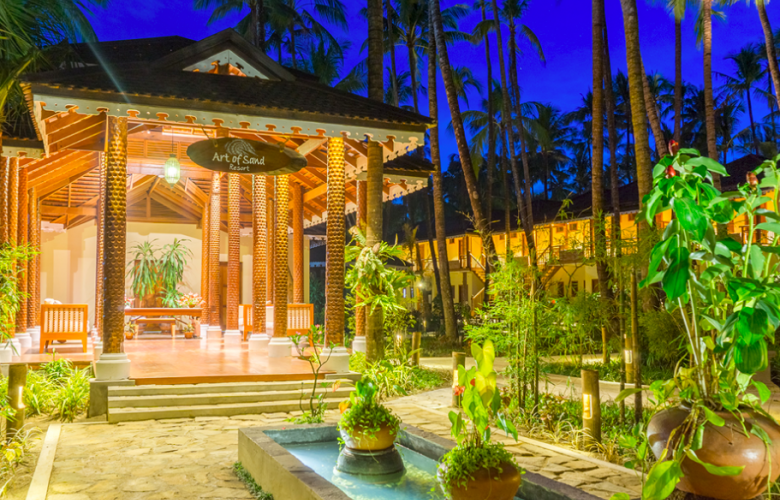Ngapali hotel market buoyed by resort regulars despite decreasing occupancy rates - Colliers International
Contact
Ngapali hotel market buoyed by resort regulars despite decreasing occupancy rates - Colliers International
Ngapali Hotel & Resort Annual Market 2017 Report advises hoteliers in Ngapali to introduce modern comforts, excursion programs, and upgraded amenities and services to attract tourists and facilitate marketability.
In 2017, hoteliers in Ngapali witnessed sluggish demand as foreign booking cancellations became noticeable as political upheavals surrounding the state have taken a toll on the region's most famous beach destinations. Nevertheless, occupancy levels remained relatively healthy in older developments with continuous arrivals from unaffected seasoned foreign travellers and local loyal guests buoying demand.
At a glance:
- Ngapali's average occupancy rate fell from 53% in 2016 to 42% in 2017. A y-o-y change of 11%.
- Colliers advises hotels implement proactive plans to reinvigorate foreign interest (i.e. modern comforts, excursion programs, upgraded amenities and services).
- End of 2017: Ngapali's total supply stock reached more than 900 rooms.
- Colliers expects more developments to open towards the north of Thandwe "The Second Ngapali Beach."
Design Aesthetics Improving; Offerings Still Need More Variation
Three more resorts have boosted Ngapali's hotel stock:
- Pristine Mermaid Resort (Pristine Lotus Group),
- Jasmine Ngapali Resort (Jasmine Palace Construction) and
- Art of Sand Resort (a sister resort of Sandoway)
The three new resorts have together introduced 200 rooms in 2017. The number is the highest additional stock since the notable increase (of 162 rooms) recorded in 2014. As at the end of 2017, Ngapali's total supply stock reached more than 900 rooms, mainly being represented by upscale hotels. However, smaller-scale mid-tier hotels have also been evident following stronger interest from local travellers of modest budgets.
Many of the resorts in Ngapali share a typical aesthetic feature, appearing heavy on wooden furniture and finishes along with outdated designs and interior decors. Some hotels, however, have started veering away from this style, aiming for a contemporary approach through a more modern tropical and minimalist look. Colliers advises developers to adopt an architectural style in line with modern comforts and the local design sensibility. Also, given the effects of the harsh coastal weather conditions, the overall design should be deemed sustainable to minimise costs on repairs and operations.
In contrast to two to three years ago, hotel utilities and some of the amenities are also improving:
- All resorts are now equipped with constant access to electricity, backed up with generators for occasional power shortages.
- WIFI connections are available in most common areas although they are still intermittent in the guest rooms.
- Credit card payments are now commonly accepted especially in upscale hotels; some with access to ATMs.
According to several operators, Ngapali's main foreign guests are adult travellers or retirees spending at least a week to at most two months. Colliers advises operators to further entice senior clientele by creating services that suit their needs and preferences. Such as health and wellness based options like yoga, meditation, organic and healthy culinary options, and outdoor fitness activities. The provision of game rooms, mini theatres or libraries, and basic fitness centres along with outdoor team building recreational activities should encourage social ties and develop more unique guest experiences.
Occupancy Rates Drop on Average
Political issues surrounding the Rakhine state have taken their toll on occupancy levels with the average occupancy rate reaching 42% in 2017, a decline of 11% from 2016's rate of 53% in 2017, to 42%. Colliers believes that the resilient performance of select resorts stems from the strong patronage of their more tenured and repeat guests. Seasoned foreign travellers and local guests, unaffected by the political situation, were also positive contributing factors.
Hotels that have an established partnership with travel agencies maintained healthy occupancy rates. Colliers recommends operators to adopt strategic measures such as building stronger ties with travel agencies to encourage group travellers.
Average Daily Rates Drop across the Board
Full-year Average Dail Rates (ADRs) dropped across the board and in all room categories. Colliers further observed that hotels with lower ADRs managed to reach high occupancy rates. This in exception to some established developments which have a loyal customer base, where despite competitive pricing, occupancy remained modest. This may be attributed to poor upkeep and outdated room amenities. Colliers stresses the importance of aesthetic components such as landscaping, modern resort furniture, and well-curated decorations which complement the overall features in the premises. Many of the hotels in Ngapali, to their detriment, appear to dismiss the value of such elements which enhance the overall development offer as well as justify room rates.
Several hotel operators have attributed the decrease in prices to the improved access to electricity and other utilities given that most hotels in the past were heavily dependent on generators. In the medium to long-term, Colliers expects improvements in infrastructure to boost development in Ngapali further with potential for residential resorts for retirees or as secondary vacation houses. Colliers also expects more developments to open up towards the north of Thandwe which the locals refer to as the "Second Ngapali Beach" given the limited available land in the currently established hotel zone.
Click here to view Colliers International Ngapali Hotel & Resort: Annual Market Report 2017.
For more information or to discuss the report phone or email Karlo Pobre of Colliers International via the contact details listed below.
Similar to this:
Myanmar's retail sector performs well in Q1 2018
Serviced apartments, retail, and industrial sectors come out on top reports Colliers International







